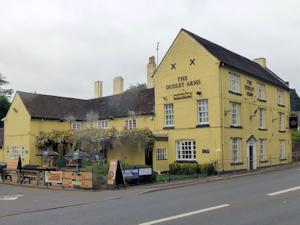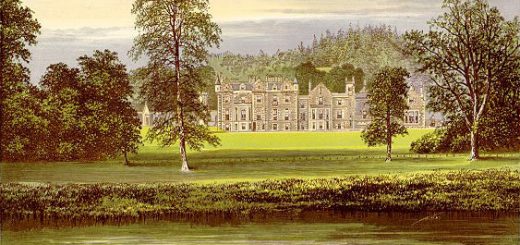Aston Hall
The origins of Aston can be traced back to before the Domesday Book (1086-7) which shows the manor named as “Estone”. Before the Norman invasion Earl Eadwin held the manor, then by 1086 it was controlled by William FitzAnsculf. This eventually passed into the hands of John atte Holte through marriage in 1367. The Holtes remained at Aston for the following two centuries.
 Aston Hall is located in the inner city area of Birmingham, built between 1618 and 1635 by the local squire Thomas Holte (1571-1654) and is of Jacobean style. Holte, one of the richest men in the country, had been knighted by King James I in 1603 and bought the title of baronet when James was raising funds to keep Ireland under control. Aston Hall was built to reflect the rank wealth and influence of Thomas at the time.
Aston Hall is located in the inner city area of Birmingham, built between 1618 and 1635 by the local squire Thomas Holte (1571-1654) and is of Jacobean style. Holte, one of the richest men in the country, had been knighted by King James I in 1603 and bought the title of baronet when James was raising funds to keep Ireland under control. Aston Hall was built to reflect the rank wealth and influence of Thomas at the time.
Thomas was a personal friend of King Charles I and allowed the king to stay at Aston on the evening of 18th October 1642, just before he lost the Battle of Edgehill during the English Civil War. Support for the king resulted in a three day siege when Parliamentarians attacked the Royalist garrison stationed there, and the hall was badly damaged. Some of this damage can still be seen on the balustrade of the Great Stairs. The Civil War impoverished the estate, which was inherited by Sir Robert Holte (MP for Warwickshire) who was the son of Edward Holte and grandson of Thomas Holte.
In 1817 it was leased to the eldest son of James Watt, and, following his death in 1848 the property was sold to The Corporation of Birmingham. It has since been renovated externally and internally – even though most original furniture is not there any more.
Ghosts of Aston Hall
There are reputed to be many ghosts at Aston Hall: one being a grey ghost who is supposed to be Holte’s daughter. It is said that after she tried to elope, Holte had her locked in a room for sixteen years, where she went insane and may have starved to death. This story may not seem so far fetched when you consider Edward Holte (1600-1643), the oldest son of Thomas Holte, had married Elizabeth King against his father’s wishes and was disinherited. Following the death of his other son George in 1841, Thomas remarried and tried for another boy child rather than allow Edward to inherit Aston. Edward was killed at the Royalist Oxford Headquarters in 1843 and Thomas’ new baby son died in infancy. Thomas and Edward never reconciled though he did allow Robert (Edward’s son) to be his heir.
Other ghosts include a housekeeper who worked there in 1645 who appears wearing a green dress, and Dick, who was a houseboy accused of stealing who hung himself in the servants’ quarters. This room is now known as Dick’s Garret and the caretaker is reputed to have seen his swinging ghost on several occasions.























Recent Comments